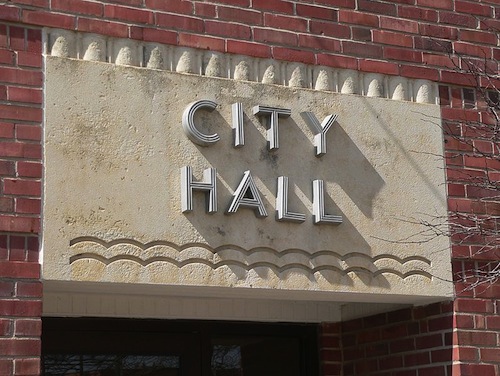Inside City Hall

We’ve already looked at a few technical definitions of municipal government in the United States, but what about the differences in how local governments are run? It turns out there’s a great degree of variability in political structure, and understanding this diversity is an important factor in understanding how policy is made and how the public interacts with and accesses government information.
Here are a few of the most common structures for municipal governments:
- A mayor-council system has a mayor serving in the executive position and a council as its legislative branch. The mayor might be chosen by council members or elected by residents. Council members are chosen in a separate election from the mayor and can represent different districts in a city or a city at large. There is plenty of variance in the relationships between mayors and councils. In a strong mayor system, the mayor can appoint department or agency heads with approval from the council and has veto power for legislation the council passes. In a weak mayor system, the mayor lacks these powers and the council holds most of the policy power.
- In a council-manager system, the council is elected to be the legislative branch and appoints a manager to serve as the executive. The manager can appoint department heads and is usually professionally trained in local government administration. Sometimes municipalities with this structure also have a mayor or council president who serves as a figurehead. They might try to influence policy, but they have no real power over the council. The weak mayor system label is sometimes also applied to this format.
- San Antonio, Texas, is one example of a city with a council-manager system. The city has an elected mayor, but the manager “is responsible for carrying out the actions and policies of the council.” San Jose, California, is another example of this.
- A commission system places legislative and executive power in one panel. Commissioners set local laws and run departments. This system is often used in counties. There is usually a chairman of the commission who serves the role of running meetings or has other leadership functions. Sometimes, a commission chooses to appoint a manager to act in the executive function. In other cases, commissions might mirror the mayor-council system, where a mayor can veto commission decisions and make budget recommendations.
- Clark County, Nevada, has elected commissioners who appoint a county manager to be chief executive. In Miami-Dade County, Florida, there is a mayor who can veto the county commission’s decisions.
- The town meeting format gathers registered voters to decide legislative and executive matters, putting decisions directly in the hands of those who show up to the forums. There’s also a variation of this with the representative town meeting, which is what it sounds like: registered voters choose representatives who decide matters at town meetings.
- Marblehead, Massachusetts, has an open town meeting system.
- Darien, Connecticut, has a representative town meeting system.
This is just a basic look at some of the ways municipal government can be structured. Several states have great resources outlining the diversity of formats. New York has a local government handbook that covers topics ranging from city charters to the electoral process in different municipalities, and California has a detailed explainer of local government formats there. Many states at the very least have a web page explaining some of the layers of municipal government or links to associations that deal with municipal matters. The federal government provides a directory of state resources on local government.
This research was also informed by information from groups like the National League of Cities, City Mayors, the International City/County Management Association, the Strong Mayor-Council Institute, and the National Civic League.

